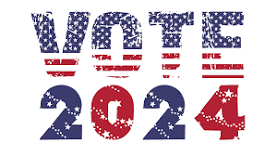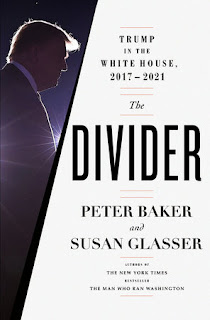In his monumental study of fourth-century Constantinian Christianity, Constantine and the Bishops: The Politics of Intolerance (Johns Hopkins Y. Pr., 2000), H.A. Drake observed that all movements need organization and so can come to be dominated by their more militant members. Always acknowledging the limitations of any analogy, this principle may speak today to our two contemporary political parties, in which the militant « populist » MAGA « base » has pulled what remains of the Republican Party in its extreme Trumpist direction, while the militant extreme left-wing has likewise (although with more limited success) attempted to pull the rest of the Democratic Party leftward.
Historically, Drake argues, this helps explain 4th-century Christianity’ increased militancy and embrace of coercion after Constantine, who had generally pursued a more moderate, inclusive, pluralistic religious vision for this empire. Of course, there were (are) elements in Christian faith which might have led (might yet lead) in a more irenic direction. Drake contends « that the more secure a community is, the more willing it is to tolerate diversity and varying belief. Constantine’s success in asserting the irenic side of Christian teaching, then rested at least in part on the relative security he established in the aftermath of Diocletian’s intensely disruptive persecution. » What changed after Constantine? Drake suggests that « the successes Christianity enjoyed in the aftermath of Constantine’s conversion » led to « a significantly higher standard for model Christian performance than the emperor had wanted. » Secondly, Julian the Apostate « managed during his brief reign [361-363] to resurrect Christian doubts about the stability of their new situation and to accelerate the polarization of Christians and pagans into two clearly identified, separate, and mutually hostile camps. »
Now, with all the obvious historical and cultural caveats, I suggest something similar has been at work with U.S. religion in particular and the wider U.S. culture in general. A quarter century ago, the U.S. was still seen as the exceptional nation, where the so-called « secularization thesis » did not yet appear to apply. Whereas the rest of the developed world was fast becoming post-christian, religion in general and Christianity in particular (at least in its Evangelical manifestations) appeared to be thriving in the U.S.
I suspect, however, that the apparent acquisition of political power by Evangelicals and their conservative Catholic allies may have led to unrealistic expectations of ever-increasing political power, which led to greater intensity and militancy. But those expectations were increasingly disappointed, which in turn further reinforced the intensity and militancy. At the same time, both Evangelicalism (because of its inherited apocalyptic tendencies) and conservative Catholicism (because of its historic sense of alienation from the mainstream American culture) were disposed to see themselves as perpetually threatened by the same secular society that they sought to dominate. There have been numerous tipping points, going back to the 1960s school prayer decisions and the 1973 abortion decision. The normalization of LGBT rights early in this century seems to have been another such tipping point. So was the pandemic, which for many may have been the proverbial « last straw. »
If, on this date in 2020, someone had said that the U.S. government is coming after religion and will force churches to close and prohibit assembling for Sunday worship, probably most would have responded that that would never happen in the U.S., and that the First Amendment would protect the churches if it were attempted. Yet, within three months, that was exactly what happened, and it was widely (but by no means exclusively) interpreted through a hermetic of persecution. It is an imperfect but not implausible analogy to what happened to the Church after the experience of Julian’s apostasy. One (maybe inevitable) result has been the conquest of so much of organized American religion by its most militantly culture warrior constituencies.
Looking beyond the churches to society as a whole, the analogy may be perhaps even less perfect but it still also appears applicable. The American equivalent of early Christianity’s Constantinian moment of triumph was the end of the Cold War, which represented not only a victory but a sudden, unexpected, and easy victory. Legitimized by American dominance, the ideology of the American Dream intensified and sought with increasing militancy to succeed everywhere. In the 1990s, this meant imposing market capitalism on the former Soviet bloc. In the 20002, it meant spreading democracy by force in the Middle East. Both efforts having failed, American society has since sought to remake its own democracy in increasingly extreme (and anti-democratic) ways – both on the « woke » left and on the « populist » MAGA right.
These analogies are suggestive, not exhaustive. And they amplify and complement my earlier (cf. January 2) more institutionally oriented observations about the political, social, and economic factors which have contributed to what some have labelled our country’s current « cold civil war. »
So, if this is where we are as a nation at the beginning of 2024, where do we expect this current context to take us this year?
To be continued.





